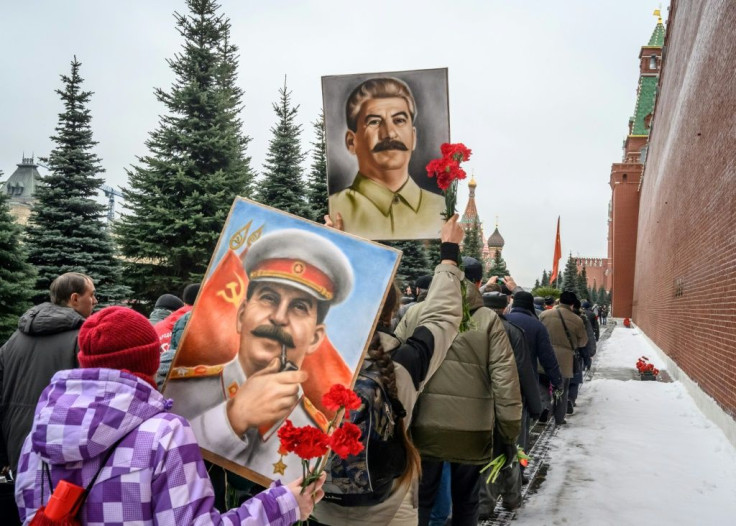Reburying The Dead: Cases Of Controversial Leaders

Settling on a final resting place for deceased controversial leaders, such as Spain's dictator Francisco Franco, has long been troublesome for many countries.
Spain's Supreme Court on Tuesday gave the government the go-ahead to remove Franco's remains from a grandiose mausoleum to a more discreet family tomb.
Here are some similar cases from the past:
Soviet Union: Joseph Stalin
On his death in 1953, Stalin was buried in the Moscow mausoleum of his predecessor, Vladimir Lenin.
Eight years later a process of "de-Stalinisation" was launched to dismantle the dictator's personality cult. His remains were quietly transferred to a more modest resting place near the Kremlin, which still attracts diehard communists.
Albania: Enver Hoxha
The authoritarian communist ruler of Albania for 40 years was buried as a national hero in the Martyrs' Cemetery after his death in 1985.
But after the fall of communism, Hoxha's remains were exhumed in 1992 and transferred to an ordinary public cemetery in a suburb of the capital Tirana.
A pyramid-shaped complex in his honour served for a while as a cultural centre but today lies in ruins.
Romania: Nicolae Ceausescu
Communist dictator Ceausescu and his wife Elena were arrested after a popular uprising in 1989, summarily judged and executed by firing squad.
Amid fears their graves might be desecrated, they were surreptitiously buried at night under crosses bearing false names.
The bodies were exhumed in 2010 to dispel doubts about their identity and reburied at Ghencea cemetery in Bucharest, this time together.
Rising nostalgia for the communist era prompted some Romanians to visit the red marble grave in January 2018 to mark the 100th anniversary of Ceausescu's birth.
Ethiopia: Haile Selassie
The remains of the last emperor of Ethiopia were discovered in 1992 and exhumed from a grave in Addis Ababa, where they had been cast by leaders of the 1974 revolution.
It was only in November 2000 that Selassie, who died in 1975 in mysterious circumstances, was finally had a church burial in the presence of the imperial family.
Iraq: Saddam Hussein
The Iraqi president, who ruled from 1979, was arrested by US-led forces in 2003, hiding down a hole north of Baghdad.
After his execution in 2006 for crimes against humanity, his body was buried in a mausoleum he had built for himself in the village where he was born.
The tomb became a place of remembrance for his family and supporters but around 2014 it was mysteriously destroyed.
Some suggested an attack by the Iraqi air force was responsible, while others said it had been blown up with dynamite.
The whereabouts of the body, including whether it remains in the ruins, is a subject of much speculation.
Libya: Moamer Kadhafi
Killed during the Libyan revolt in October 2011, the dictator for nearly 42 years was buried in a secret desert location after a religious ceremony.
The military said it wanted to avoid Kadhafi's grave site becoming a rallying point for supporters.
One official said the aim was to follow the example of what happened to Nazi dictator Adolf Hitler, whose body disappeared after his suicide as Soviet troops stormed Berlin in 1945.
Germany: Rudolf Hess
The remains of Hitler's right-hand man, who died in prison in 1987, were exhumed in secret in 2011 in Bavaria and his grave destroyed to be rid of Germany's biggest neo-Nazi pilgrimage site.
Hess's remains were placed in another coffin which was incinerated and his ashes scattered at sea.
© Copyright AFP {{Year}}. All rights reserved.





















